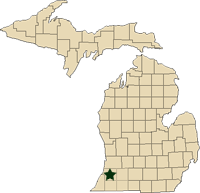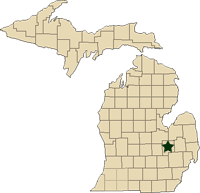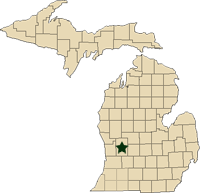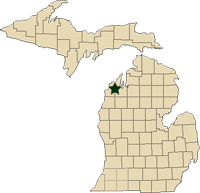Michigan apple harvest reports – August 23, 2012
New reporting style for the odd 2012 growing season.
From the MSU apple team
In a normal apple year, Michigan State University would be launching into weekly apple maturity reports from late August until mid-October. As everyone in the apple business knows, early season warm temperatures followed by April frosts drastically reduced the Michigan apple potential for 2012 (estimated 2.9 million bushels statewide compared to approximately 25 million for 2011). Accordingly, the MSU apple team reports this fall will present less detail on current apple maturity status and will link to pertinent articles on apple varieties, harvesting, storage and post-harvest disorders.
See the MSU apple website at apples.msu.edu and the MSU Extension News for Fruit website for more information, including reports from other regions, past season reports and much more information about apple maturity and apples in general.
Each year, MSU Extension publishes predicted apple harvest dates. This year’s can be read in the article Predicted 2012 apple harvest dates and takes into consideration the very strange weather we’ve had – early start to spring, several frosts and freezes, a greatly reduced fruit set and a summer drought. All these events have given us the least confidence in our predicted harvest dates than ever before. However, looking at early apple varieties that are being harvested around the state, it does seem that the adjusted harvest dates are close to what is happening in orchards around the Grand Rapids, Mich., area for which these dates are calculated. So, in the end, the early bloom and hot summer temperatures have pushed apple maturity very early, as much as three or four weeks earlier than usual.
Below are the apple maturity and harvest statuses by region.
 Southwest Michigan - Bill Shane, Michigan State University Extension
Southwest Michigan - Bill Shane, Michigan State University Extension
Very few Gala fruit survived the April freeze. Crops are mainly found on tops of trees in the highest part of orchards. Harvest of main season Gala varieties will start this week or next, depending on the site and crop load. Some Gala on weak trees were already over-mature with waxy skin, yellow-tinted flesh, low firmness and poor staining. McIntosh maturity is behind Gala. Honeycrisp harvest is around the corner—we are seeing quite a bit of variation of fruit maturity from tree-to-tree with this variety this year.
 Southeast Michigan - Bob Tritten, Michigan State University Extension
Southeast Michigan - Bob Tritten, Michigan State University Extension
Very few Gala are present to be harvested. Growers will be harvesting Honeycrisp soon where there is fruit to be had.
 West Central Michigan - Phil Schwallier and Amy Irish-Brown,
Michigan State University Extension
West Central Michigan - Phil Schwallier and Amy Irish-Brown,
Michigan State University Extension
Harvest of Gala should begin at any time, but growers are waiting for more size and color and don’t seem to be in a hurry to get started. There are not many Gala to be found, so this variety will be picked quickly. McIntosh is behind Gala in maturity this year and McIntosh still eat quite green. There are very few McIntosh around. Honeycrisp will be the next major variety to be harvested. Looking ahead, growers are reporting very small Jonathan size and these small fruits have no seeds when sliced open. For early harvested Paula Reds and Gingergolds, growers have said their harvest costs have been two times normal amounts, ranging from $35 to $40 per bin.
Considerable leaf yellowing and drop is being expressed in apple trees in the last week. It can be seen to some extent on all varieties, but has been most noticeable on Gala, Golden Delicious and Red Delicious. This is a normal shedding of leaves that is often seen in late July and August as the tree “adjusts” itself to balance nutrient allocations against crop load.
 Northwest Michigan - Nikki Rothwell, Michigan State
University Extension
Northwest Michigan - Nikki Rothwell, Michigan State
University Extension
In northwest Michigan, the apple crop is variable and varies by site and variety. Apple harvest has begun across the region and Gingergolds, Pristines and a few spur McIntosh are currently being picked. Quality of fruit looks good although the apples are on the small size, likely due to lack of rainfall in July and August. Most growers are irrigating, where possible, to attempt to size fruit. Scab and insect pests are minimal at this time.
Apple post-harvest laboratory comments - Randy Beaudry, MSU Department of Horticulture
Samples sent to the lab this week were from the Grand Rapids, Mich., area and included Gala, RubyMac, LindaMac, Honeycrisp and SweeTango.
Go to the 2012 MSU apple maturity program and reports.



 Print
Print Email
Email



